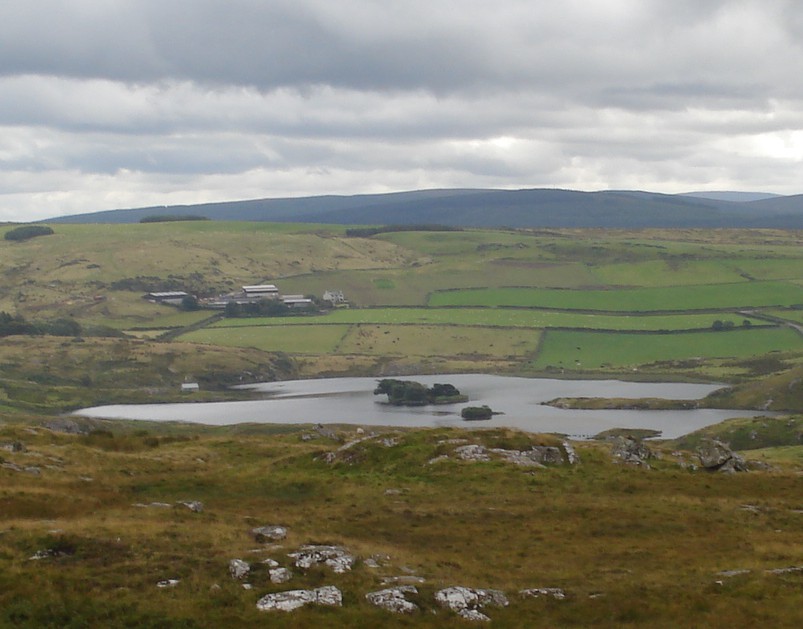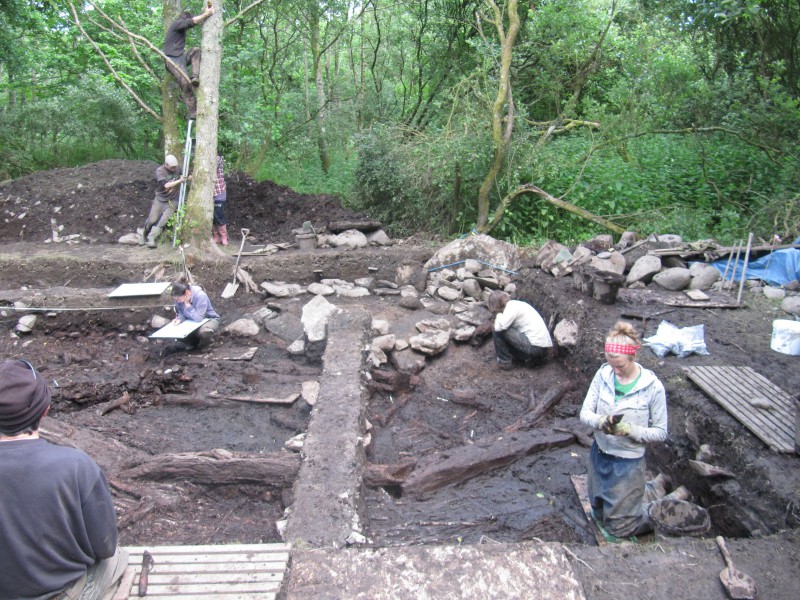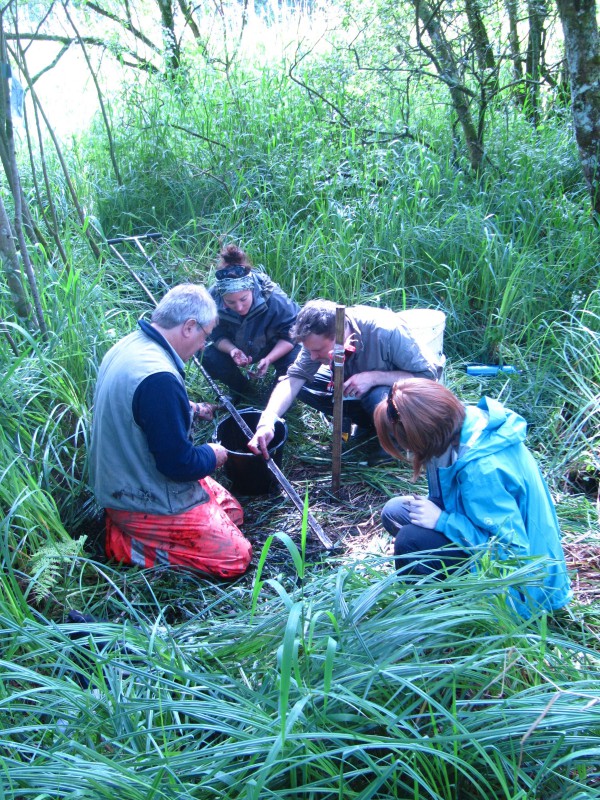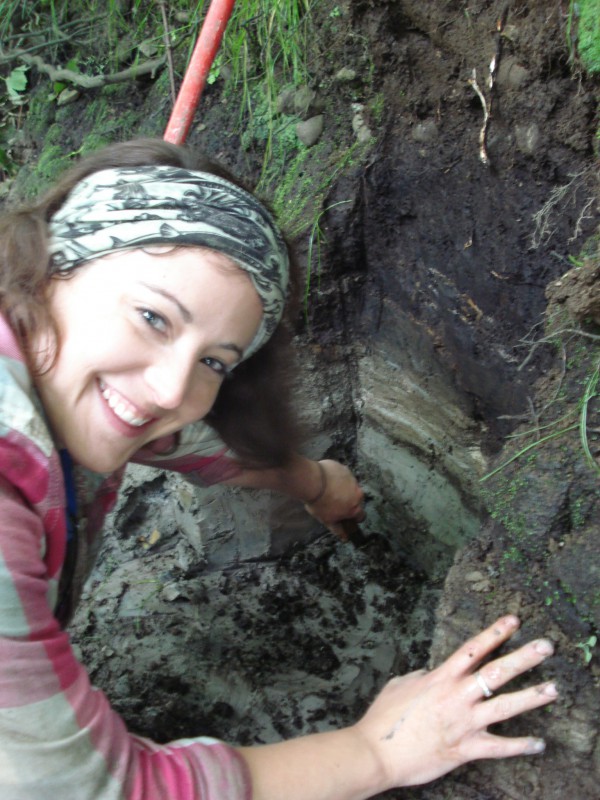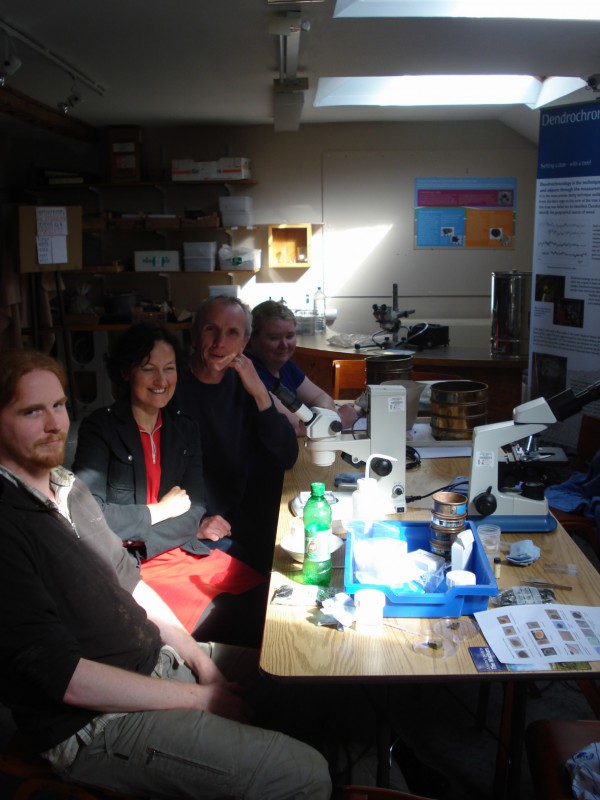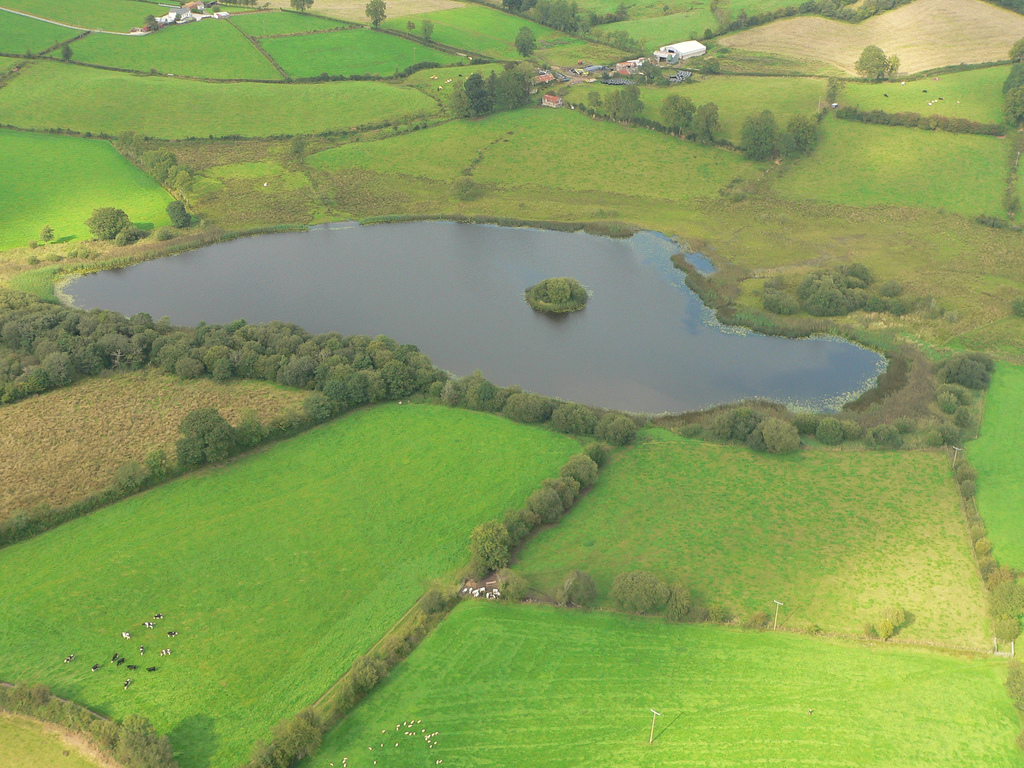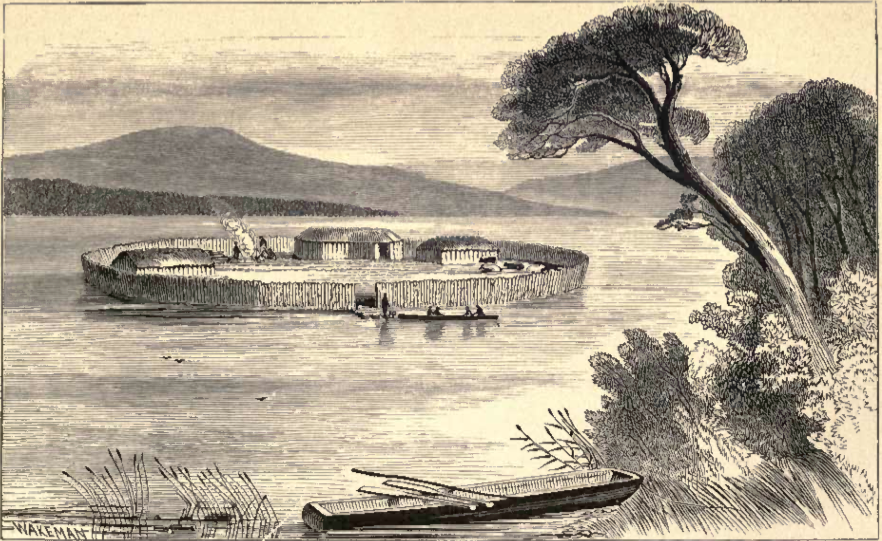In September the team went out to collect sediment cores again. We visited some stunning sites again and collected a lot of glorious mud. Now we need to analyse this back in the laboratory.
Black Loch of Myrthon excavation
Image
In July we joined our colleagues of AOC Archaeology at their excavation of an iron age round house at the Black Loch of Myrthon. This is the second round house that is being excavated on this site and the number of ‘bumps’ suggests that there must be a dozen more hearths to discover. A true lake village, similar to Glastonbury. The Black Loch site is absolutely stunning, with incredible preservation of timbers and interwoven twigs in flooring mats. Have a look at some great news clips made by DigTV: https://vimeo.com/user41765011/videos
We did some coring in the area around the excavation and discovered that the settlement was likely located on a slightly raised area that was surrounded by a lake on one side and by a stream on the other side. The Black Loch itself no longer exists, but under two meters of peat we found at least five to eight meters of lake sediments that go back to the end of the last glacial period.
Together with some interested members of the public we had a look at the sediments and found that they contained diatoms (siliceous algae) and invertebrate remains. These remains also indicated that the lake was deep in the earlier phase of its existence and gradually became shallower. We will soon take samples for radiocarbon dating and other analyses to see if we can trace the human activity at the settlement in our sediment cores.
Celtic Crannogs
Crannogs are island dwellings that were built in lakes and mires. They have a distinct ‘celtic’ distribution with 1500 known sites in Ireland and 400 in Scotland (but only one in Wales and none in England). They were constructed from ca. 2500 years ago and used up until the Medieval Period. Crannogs can have remarkable preservation, because they are largely under water. This also makes them difficult to study as it requires diving and underwater excavation, and despite their widespread occurrence little is known about them. What were they used for, by whom, and for how long?
Intrigued by crannogs? So are we. Over the next few years we will continue to analyse samples from sediment cores and excavations to learn more about the use and longevity of crannogs.


